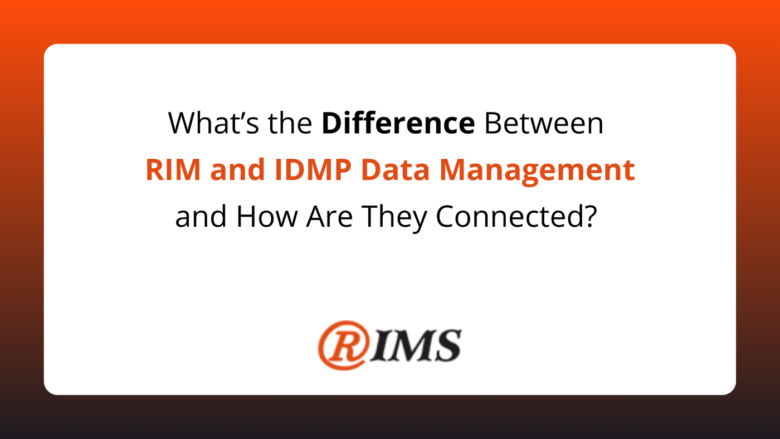What’s the Difference Between RIM and IDMP Data Management, and How Are They Connected?
As the pharmaceutical and life sciences industries grow, managing regulatory information has become more complex. That’s where systems like RIM (Regulatory Information Management) and IDMP (Identification of Medicinal Products) come in. While they both play crucial roles in regulatory compliance, they serve different purposes and focus on different aspects of data management. But how exactly do they differ, and how are they connected?
Understanding RIM (Regulatory Information Management)
RIM systems are designed to manage the complete lifecycle of regulatory information, including document management, submissions, approvals, and compliance. The primary goal of a RIM system is to keep track of all regulatory information, ensuring that companies can stay compliant with global regulations while preparing and submitting the necessary documents to regulatory agencies.
With RIM, pharmaceutical companies can manage a wide range of regulatory processes, including product registration, labeling, pricing, and more. A good RIM system ensures that the regulatory data is organized, up-to-date, and easily accessible, making it easier to respond to queries from authorities and streamline submissions.
What is IDMP (Identification of Medicinal Products)?
IDMP, on the other hand, is a set of international standards developed by the European Medicines Agency (EMA) that focuses specifically on the identification and traceability of medicinal products. The goal of IDMP is to ensure that all medicinal products are uniquely identified and can be traced back across various markets, promoting better safety and compliance.
IDMP data management involves capturing and organizing detailed information about pharmaceutical products such as their composition, marketing authorization details, packaging, and more. By adopting IDMP standards, companies can ensure their products are accurately identified, reducing the risk of errors and improving patient safety.
The Connection Between RIM and IDMP
While RIM and IDMP focus on different aspects of regulatory data, they are closely connected. RIM systems manage the broader regulatory information of a product, whereas IDMP focuses on the detailed product identification data required for compliance. In fact, RIM systems often integrate IDMP data management within their platform to provide a comprehensive solution for regulatory compliance.
By combining RIM and IDMP, pharmaceutical companies can ensure not only that their products are identified correctly but also that all regulatory data is managed efficiently. This integrated approach reduces the risk of errors, enhances regulatory submission accuracy, and streamlines product registration processes.
How Our Solution Helps
At Sarjen, we provide a comprehensive RIM IDMP solution that helps pharmaceutical companies manage both regulatory information and product identification data in a unified system. Our solution ensures that the data is always accurate, organized, and compliant with the latest global standards. By using our platform, companies can stay ahead of regulatory requirements and focus on what matters most—bringing safe and effective products to the market faster.
By understanding the difference and connection between RIM and IDMP, companies can make better decisions on how to manage their regulatory information effectively, ultimately improving compliance and reducing the risk of delays or errors in their submissions.
In short, while RIM and IDMP serve different purposes, their integration is key to streamlined regulatory data management. Together, they help pharmaceutical companies stay compliant, reduce errors, and improve the efficiency of their regulatory processes.


Comments are closed.